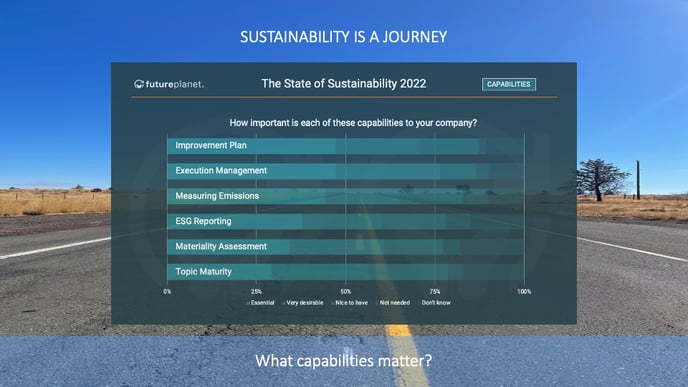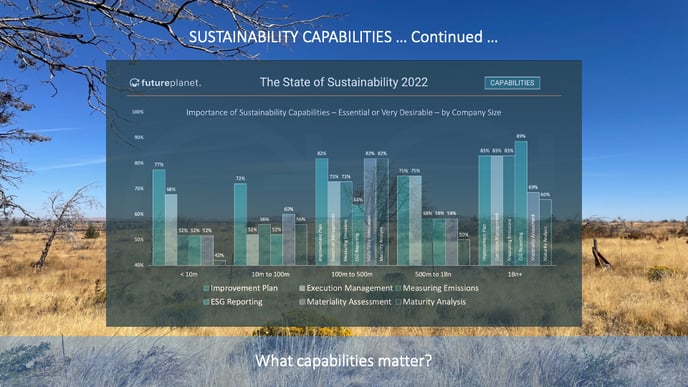What are SDGs?
The 2030 Agenda for Sustainable Development is a shared action plan for peace and prosperity, for people and the planet, now and into the future. More and more often, articles on LinkedIn are headlined with references to ‘the triple bottom line: people, planet and profit’, ‘the circular economy’, ‘sustainability’ and so on. It is important to note that all of these concepts, and their associated beliefs, are deeply rooted in the Agenda for Sustainable Development and its accompanying SDGs.
The agenda was adopted by all UN Member States in 2015. At its heart are 17 SDGs which are an urgent call for countries, companies and citizens to come together and work in a global, collaborative partnership for the survival and betterment of our people and planet.
COVID-19 has highlighted the fragility of humanity. Climate change will have far more reaching effects than COVID-19, it’s just moving at a slower, less forceful pace. SDG 13, ‘Climate Action’, will be the SDG I will use as a reference example throughout this blog.
How & Why Should My Business Make an SDG Pledge?
Each SDG has responsibilities and actions that can be aligned to your business objectives. These performance targets are actionable indicators that companies can use to build into their business goals. SDGs can be used in business plans for economic recovery post COVID-19. Companies must future proof themselves and integrate sustainable operations; SDGs provide a roadmap to achieving this necessary move to sustainability. At a country level, a reduction in greenhouse gases would be a target in line with SDG 13. However, at a business level, a move towards the circular economy or renewable energy sources would be an example.
You must conduct a material assessment of your own business. Who are you and what do you do? A company with large manufacturing sites may deem switching to renewable energy more impactful than a professional service provider with one small office. Look at your operations to find the impact relevant to your business. The SDG actions will help you on this journey, while also providing ideas for business opportunity. EcoStraws.ie, a Limerick based company, saw a gap in the market for sustainable PPE equipment and filled this niche with the world’s first plastic free PPE offering. They distinguished themselves in the market, seized an opportunity for competitive advantage, while still achieving SDG actions. Find what is advantageous for your business and align you chosen SDG to this. Be realistic. SMEs could have huge impacts if they adopted one action alone from SDG goal 13.
Case Example: SSE Airtricity & SDG 13 ‘Climate Action’
SSE Airtricity is Ireland’s leading renewable energy provider. Their company goal is to be the leading company and driving force to a net zero carbon world (a highly energy efficient world fully powered by renewable energy). The company has onshore and offshore wind farms to produce renewable energy and they provide electric charge points. When adopting SDG 13, SSE looked at what was most pertinent, relevant and achievable to their business, revised their business plan, and aligned it to the ‘Climate Action’ goal. SSE then formulated their actionable, measurable business goals, aligned with SDG 13, to be achieved by 2030:
- Cut electricity generated by carbon by 60%
- Treble renewable energy output
- Help accommodate 10 million electric vehicles
To set their intent and commitment to the goals, SSE linked performance of the goals to executive performance and remuneration, driving action.
The benefits of this SDG are already having a knock-on effect. The drive towards a low carbon economy has resulted in 80 new job opportunities at an Irish wind farm. Partnership opportunities were also availed of with Microsoft. Both companies initiated an innovative low-carbon community engagement project with Collinstown Park Community College in Clondalkin, Dublin. The project is helping the school’s energy efficiency capabilities, which included full LED lighting across campus with the installation of full roof solar panels and batteries. In addition to cost savings, data collection opportunities allowed the school to monitor their energy usage, bridging an educational programme for Transition Year students. This in turn further built awareness on the benefits and importance of sustainability. A similar project with the Laura Lynn Foundation, led to a reduction of over €10,000 per year on their energy bill through educating and empowering the foundation to monitor its energy usage.
The altruistic benefits of an SDG pledge are evident with SSE Airtricity. Yet, as seen in the EcoStraws.ie example, SDGs can help spark the flame of business innovation providing competitive advantage.
What SDG will your business sign up for?
Remember:
- Look at what was is important, relevant and achievable to your business. This is where you can make an impact and achieve buy-in from your employees.
- Remember, SDGs are local as well as global. Projects that help your local community are just as vital as large international projects in achieving the goals.
- Align your business plan/objectives to your chosen SDG.
- Use the SDG indicators/actions to help you achieve your objectives.
- Be realistic. We all want to make the world a better place, but let’s do it one step at a time.
A Brief SDG Overview with Key Actions/Indicators:
(Please find more detail here)
1.No Poverty; Eradicating poverty, in all its forms, is the greatest global challenge. Extreme poverty must be eradicated for all people, currently measured as living on less than $1.25 a day.
2.Zero Hunger
Hunger and undernutrition are on the rise, affecting approximately 1 in 9 people in globally in 2017. A study in 2018 found that figures were similar in Ireland with 1 in 9 children going to bed hungry. Hunger must be ended, with access to adequate, nutritious food ensured to all people, in particular the poor, the vulnerable and infants.
- Good Health and Wellbeing
Progress has stalled in addressing major diseases, such as malaria and tuberculosis, with over half the global population not having access to essential health services; treatable disease epidemics in the developing world must end. Women’s death rates during pregnancy and childbirth, in low and middle-income countries, must be addressed (303,000 died in 2015).
- Quality Education
262 million children aged 6 to 17 were not attending school in 2017. All boys and girls must have access to free, equitable and quality primary and secondary education. Technological advances provide opportunities.
- Gender Equality
All forms of discrimination against women and girls must be ended, with the elimination of harmful practices such as child/forced marriage and female genital mutilation. Women must be empowered worldwide.
- Clean Water and Sanitation
785 million people lacked basic drinking water services in 2017. Universal access to safe and affordable drinking water must be ensured globally.
- Affordable and Clean Energy
840 million people worldwide have no access to electricity, with access to clean cooking fuels problematic. Universal access to affordable, reliable and modern energy services must be provided. In Ireland, a 2017 study found an estimated 400,000 households lived in fuel poverty, affecting the most vulnerable in our communities.
- Decent Work and Economic Growth
More progress is needed to increase employment opportunities, particularly for young people; reduce informal employment and the gender pay gap and promote safe and secure working environments to create decent work for all.
- Industry, Innovation and Infrastructure
Quality, reliable, sustainable and resilient infrastructure, including regional and transborder infrastructure, would support economic development and human well-being in developing countries. This, in turn, could attract industry and spur industrial development.
- Reduced Inequalities
Empower and promote the social, economic and political inclusion of all, irrespective of age, sex, disability, race, ethnicity, origin, religion or economic or other status.
- Sustainable Cities and Communities
Action is needed to reduce urban residents breathing poor-quality air and having limited access to transport and open public spaces.
- Responsible Consumption and Production
The over-extraction of resources and the degradation of environmental resources must cease, with policies introduced that improve resource efficiency, reduce waste and mainstream sustainability practices across all sectors of the economy.
- Climate Action
Climate change measures must be integrated into policies, strategies and planning. Education and awareness on climate change impact reduction and risk planning must be encouraged
- Life Below Water
The adverse effects of overfishing, growing ocean acidification due to climate change and worsening coastal pollution must be addressed. Marine pollution, in particular from land based activities, must be reduced.
- Life on Land
Land degradation and biodiversity loss is occurring at an alarming rate. Replanting of forests must be encouraged with the halting of deforestation. Poaching, animal trafficking and invasive (non-native) species spreading must be prevented to ensure animal conservation.
- Peace, Justice and Strong Institutions
All forms of violence and related death rates everywhere must be reduced, with the abuse, exploitation, trafficking and all forms of violence against children ended.
The illicit financial and arms flows of organised crime must be prevented.
- Partnership for the Goals
Strengthen the means of achieving these goals through fair and transparent taxation systems and spending of public funds. Empower developing countries by offering fair loan schemes and repayment systems.
A future blog will explore the SDGs that Future Planet have committed to. If your business needs help in aligning strategic processes to any of the 17 SDGs, our sustainability expert Rebecca Byrne, can help you on this journey.
“Never doubt that a small group of thoughtful, committed people can change the world. Indeed, it is the only thing that ever has.”

